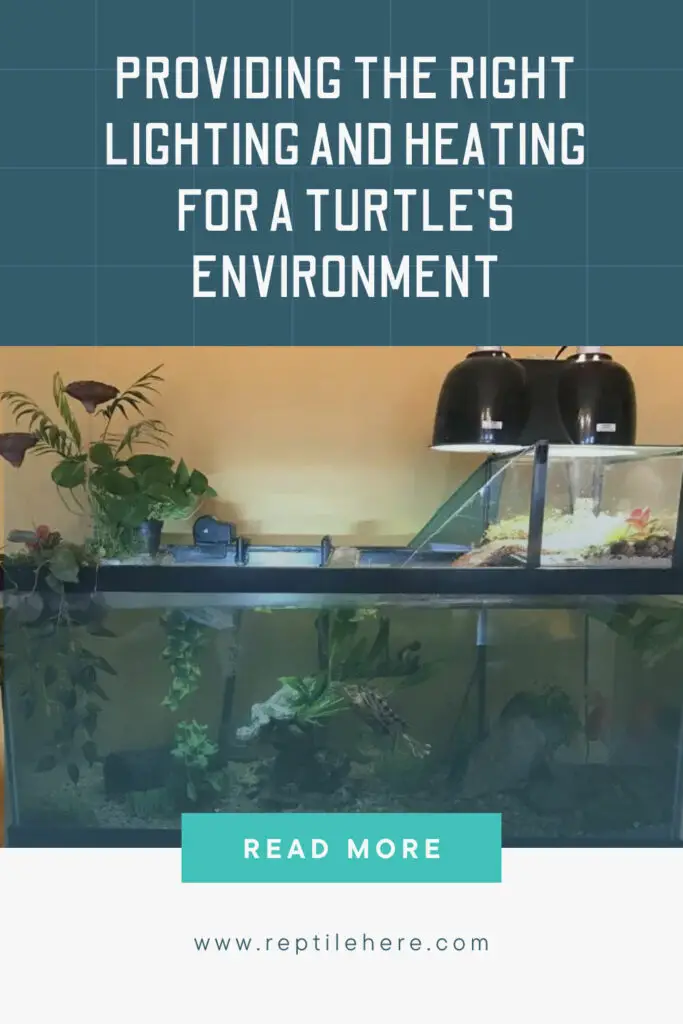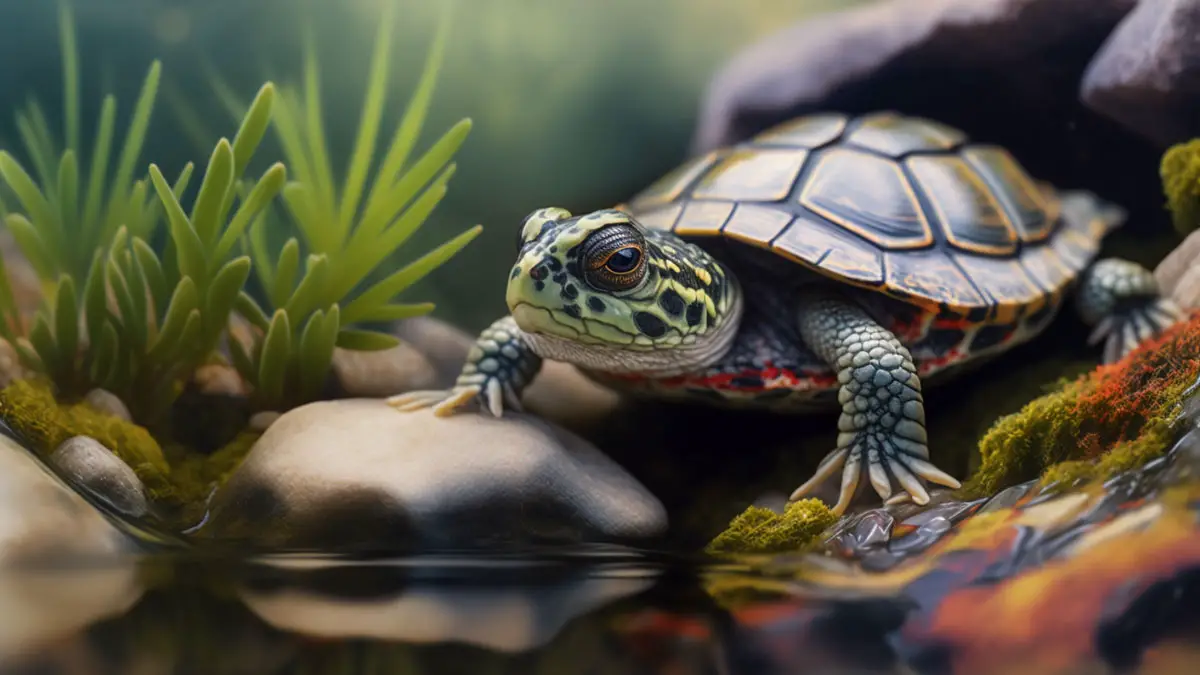Providing the Right Lighting and Heating for a Turtle’s Environment
One of the most crucial steps for setting up a comfortable and healthy living space for your turtle is correctly meetings its lighting and heating needs. These two aspects are essential for your turtle’s health and well-being and you need to set them up the right way. If you’re a new owner, however, you may be clueless about how to go about this part.
Fortunately, this article will take you through the basics of correctly setting up the UVB lighting and heating light in your pet’s enclosure, and various lighting and heating equipment available for your new turtle tank. You’ll also discover the ideal temperature range for your turtle’s habitat and the potential health issues that may arise from inadequate lighting and heating.
How to provide the correct lighting and heating for your turtle’s habitat?
Contents
When it comes to providing the right lighting and heating for your turtle, you simply need to ensure your turtle has a basking spot with access to UV light and a heat lamp.
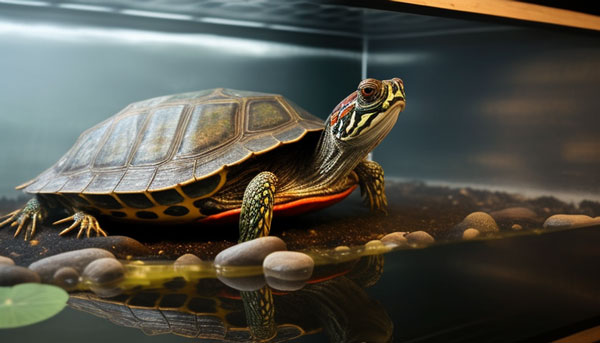
Here are more details on how to set up each of these in your turtle’s habitat:
Turtle lighting
This is essentially the UVB light that you ought to place near your basking area. This is because your turtle will spend hours basking and you want to ensure they soak up UV rays which are essential for its health (more details coming up later).
You need to make sure you choose a bulb that emits UV rays and is specially made for reptiles.
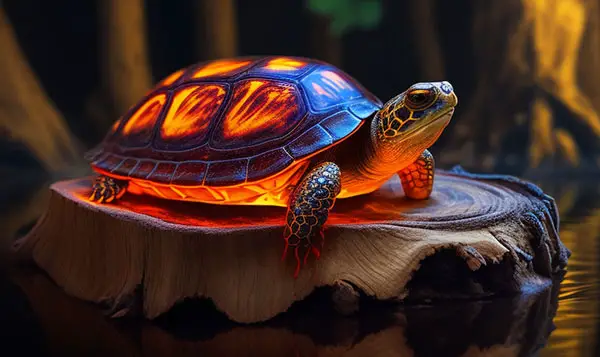
There are several options to consider such as the tube light and bulb light as discussed below:
- Bulb UV light: This type also goes by the name compact light and looks like a normal house bulb. It does a great job of ensuring your turtle gets maximum exposure to UV rays. It’s also readily available and inexpensive. However, the bulb has been linked to photo-kerato-conjunctivitis in turtles, a condition that affects its eyes due to overexposure to UV rays.
- Tube UV light: Experienced turtle owners recommend getting the tube light since it’s completely safe for your turtles and you don’t have to worry about your pet developing any issues when it basks under it. The bulb may cost you a little bit more compared to the compact light but the difference isn’t that significant.
Note that you’ll need to replace the UV bulb every 6-12 months to ensure continued efficiency at emitting quality UV rays. So be sure to keep track of when you’ll need to replace your bulb.
Heating equipment
A basking area heat lamp helps maintain the ambient temperature in your turtle’s enclosure. Most turtles require an ambient tempera range of 80 to 90 degrees F.
However, this can vary from species to species, so make sure you research your turtle’s specific temperature requirements.
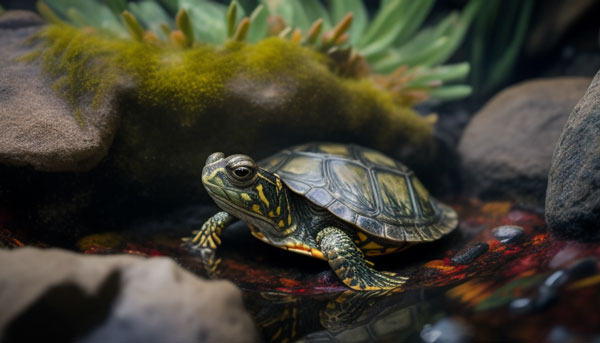
There are several options to consider when it comes to heat lights. But the most important thing to consider is the bulb wattage that your turtle enclosure requires.
For larger enclosures, you’ll need a higher-wattage bulb to help maintain the appropriate temperature range. The flip side is also true.
Here are the top options to consider:
- Regular heat bulb: Get this type of bulb specifically made for reptiles and choose the right wattage for your enclosure.
- Ceramic heat emitter: this bulb emits heat but no lighting. It’s favored by many turtle owners because it’s long-lasting, less fragile than a typical heat bulb, and can be used both day and night since it doesn’t produce light.
- Mercury vapor bulb: this heat bulb is also capable of emitting UVB rays. This makes it a great choice if you prefer an all-in-one bulb that produces UV rays plus heat at the same time.
Why you need UVB lighting and basking spots in your turtle’s environment
When setting up your turtle tank’s indoor enclosure, you want to provide it with a properly set up balking spot to try and mimic your turtle’s natural environment.
That said, turtles in the wild usually bask in the natural sunlight for around 10 to 14 hours.
You’ll, therefore, need to provide your captive turtle with a completely dry and comfortable basking spot where it can take a break from swimming, take rest, and completely dry off its body.
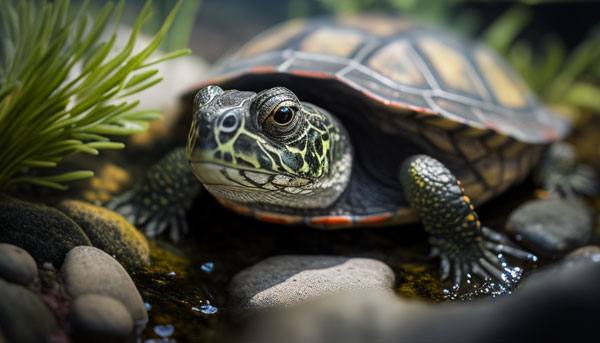
You also want to ensure the basking spot is equipped with UVB lighting for your turtle to soak up those UV rays.
The UVB rays help your turtle to synthesize vitamin D3, which promotes proper absorption of calcium it takes in from the diet you provide it with.
Calcium is an essential nutrient that promotes healthy shell and bone development in your turtle’s body.
What’s the ideal temperature range for a turtle’s habitat?
Generally, the ideal temperature range for most species is 75°F and 85°F (24°C to 29°C) during the day (though it can slightly drop at night).
However, the ideal temperature range for your turtle’s habitat will depend on the species you get for a pet turtle.
For instance, aquatic turtles require warmer temperatures while their terrestrial relatives are capable of tolerating cooler temperatures.
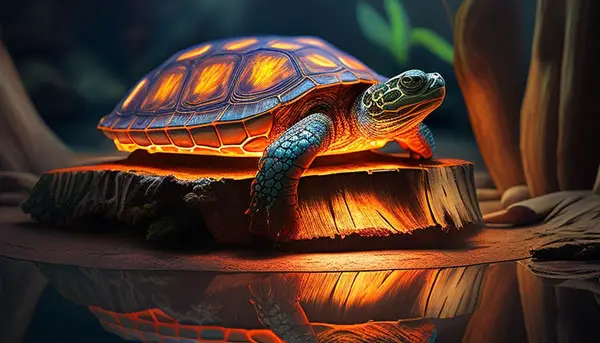
We advise you to research the specific temperature requirements of your species pet turtle to help you set up a habitat that mimics its natural environment as much as possible.
Here’s a table showing the ideal temperature range for some of the most popular turtle species:
| Turtle species | Ideal temperature range |
|---|---|
| Red-eared slider | 75°F to 85°F |
| Box Turtle | 75°F to 85°F |
| Painted turtle | 75°F to 80°F |
| Musk turtle | 75°F to 80°F |
| Map turtle | 75°F to 80°F |
Potential health problems that can arise from inadequate lighting and heating
Potential health issues your beloved turtle is likely to develop due to inadequate lighting and heating include:
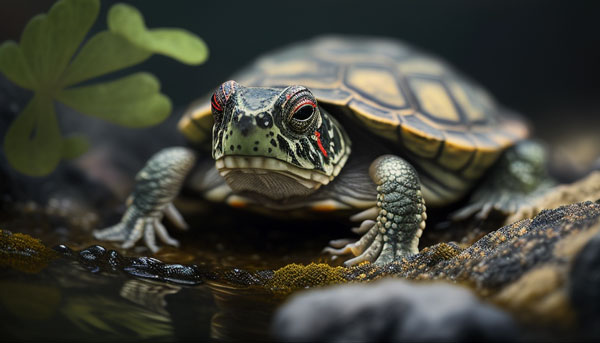
Metabolic bone diseases (MBD)
Lack of sufficient UVB lighting in your turtle’s enclosure can lead to metabolic bone disease as it’s unable to absorb UV rays to help it produce vitamin D3 for proper calcium absorption. Poor calcium absorption may make your turtle turn lethargic and even lead to loss of appetite. (Source).
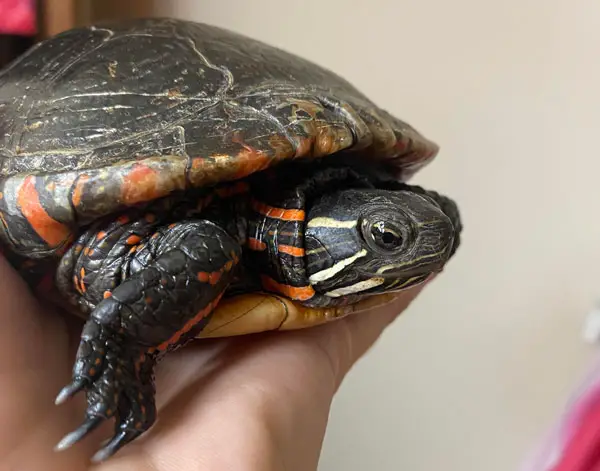
MBD is not only painful but can also lead to serious deformities and complications such as softened shell, bone fractures, partial paralysis, etc., so it’s important to avoid it as much as possible by ensuring your turtle has access to UV lighting daily.
Respiratory infections
Lack of proper heating in your turtle’s environment can also make the temperatures drop. Remember, your turtle is endothermic and depends on its environment to regulate its body temperature and power various body functions. Temperatures below the optimal range weaken its immune system, exposing it to respiratory infections.
Issues with the digestive system.
As a cold-blooded animal, your turtle also relies on warm temperatures to help it digest food properly. Colder temperatures cause its digestion process to slow down and this can lead to digestive issues such as bloating and constipation.
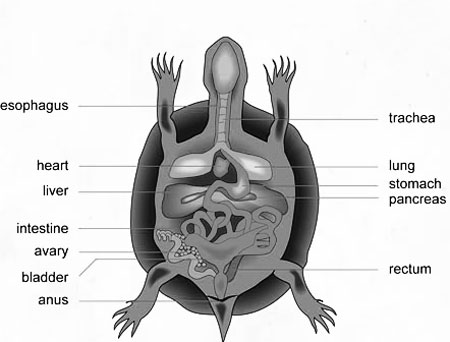
Final Verdict
Proper lighting and heating in your turtle habitat are crucial for your pet’s health and well-being. And we have just laid out the guidelines for you to set up the light and heating correctly in the above guide. Make sure you choose the correct lighting and heating equipment designed for reptiles and place them correctly to ensure maximum exposure of your pet to UV light and heat.
Remember, inadequate heating and lighting in your turtle’s enclosure puts your pet at risk of metabolic bone disease which is characterized by a lot of pain and deformities. Your turtle may also suffer respiratory infections which can turn fatal if not treated on time. Just make sure you provide your pet turtle with proper lighting and heating to keep it happy and healthy!
